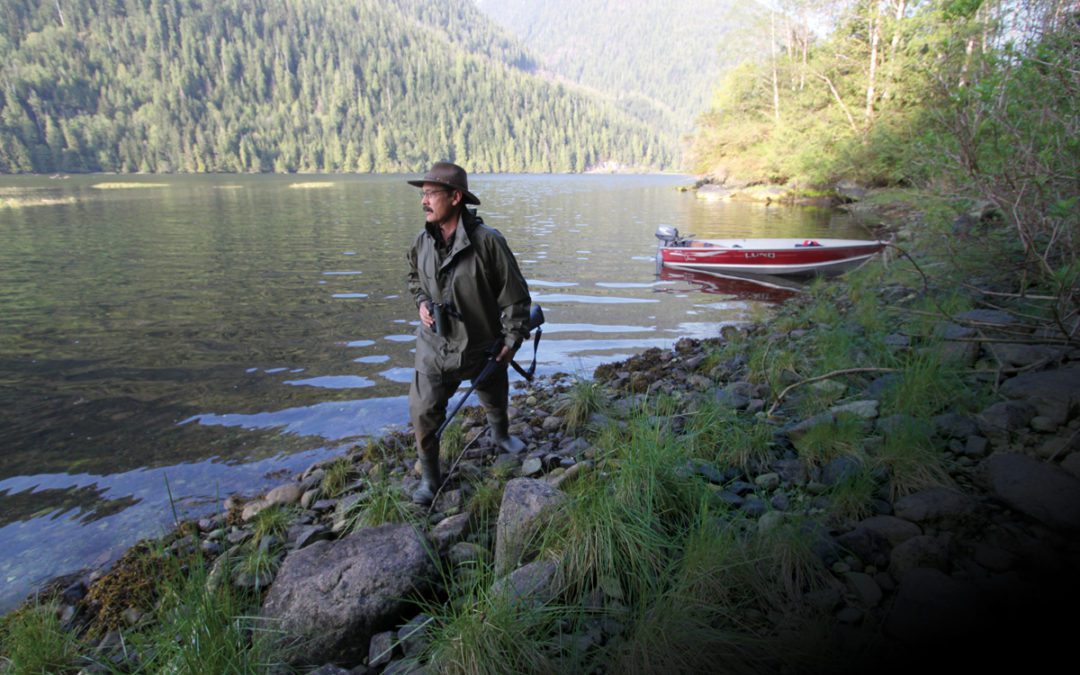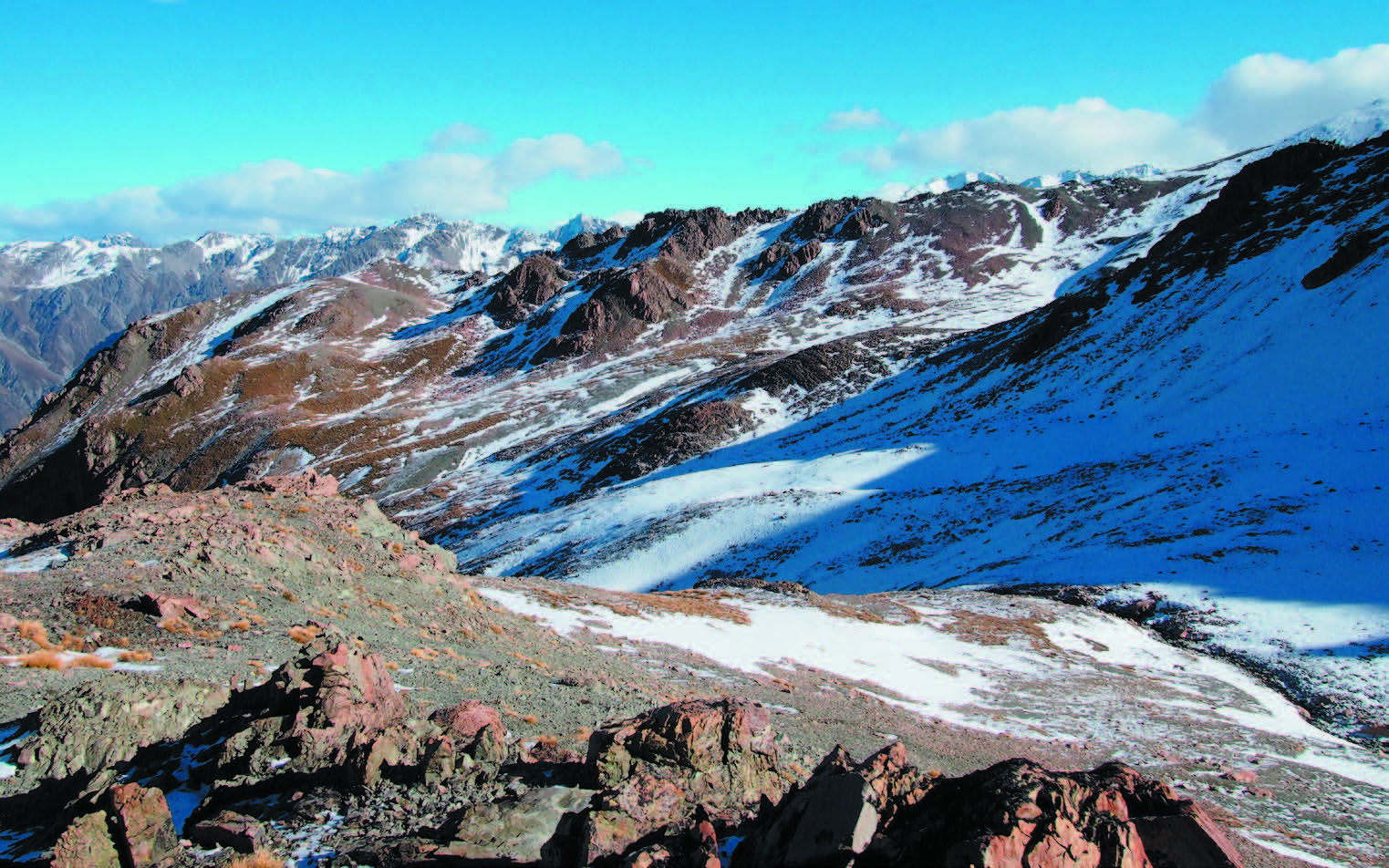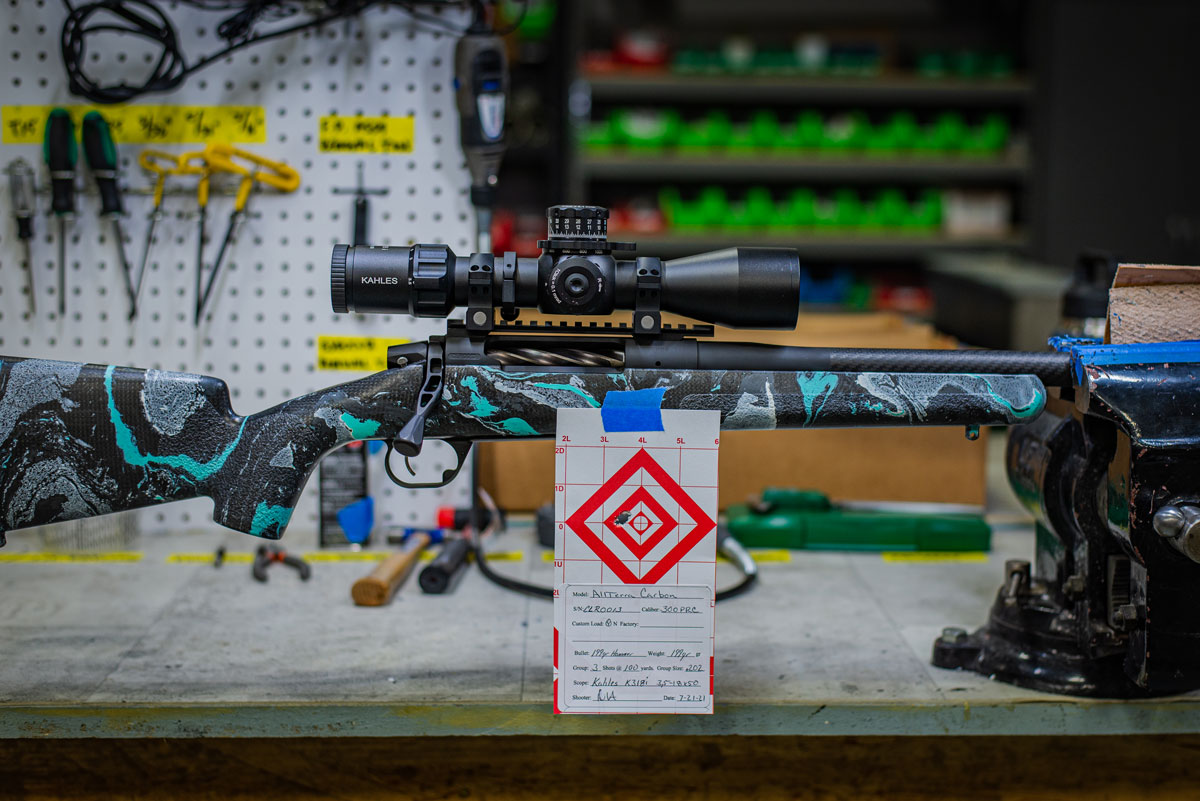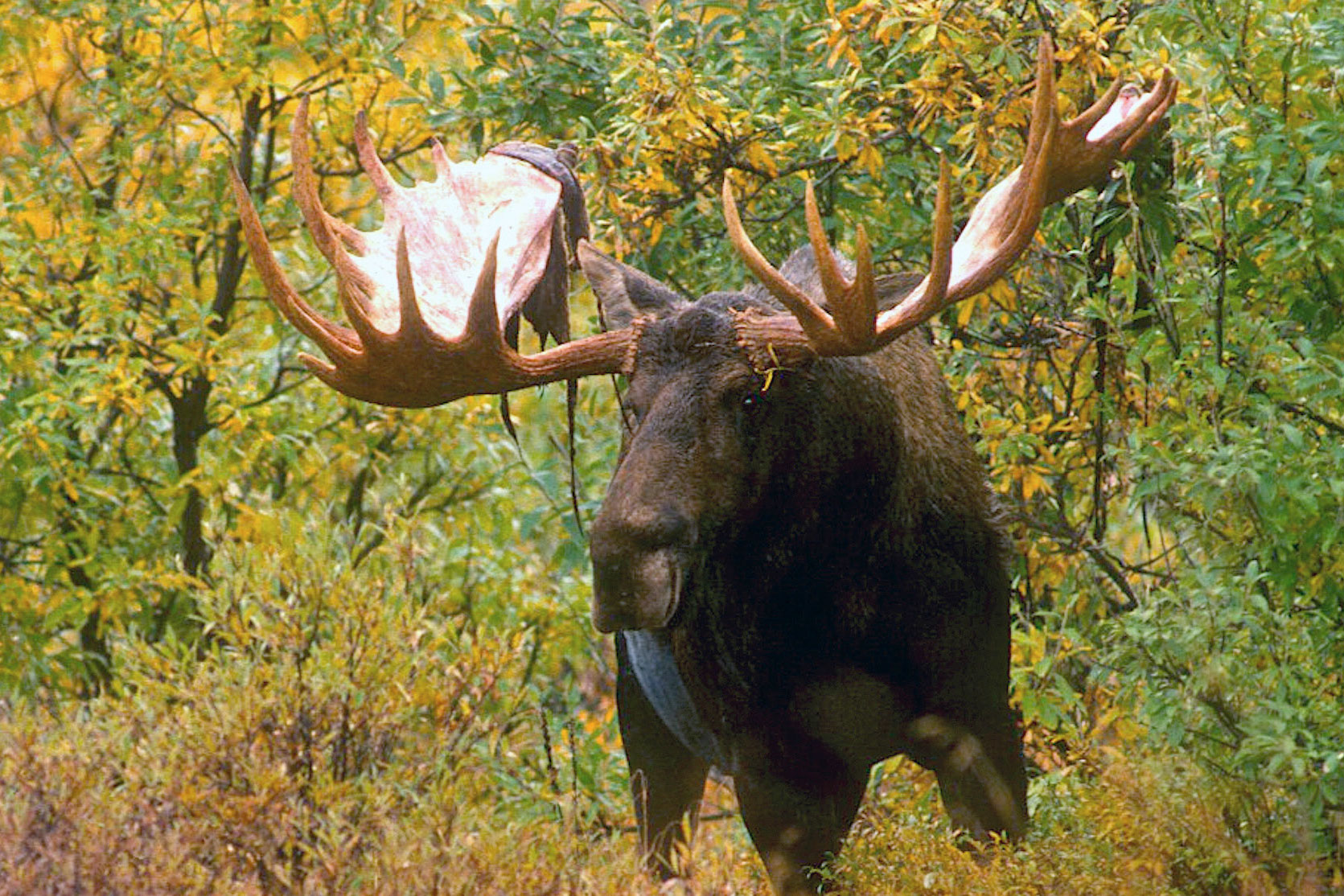The bear, rotund and grazing like an angus heifer, didn’t hear the purring of the 25-horse outboard, didn’t detect the splash of rubber boots hitting the water, failed to notice the scrape of stone against aluminum. Two deadly predators eased their boat ashore under the veil of wind that had danced with island palm fronds, gusted over sperm whales and lifted albatrosses over the Pacific.
Wavelets splashed against the rocky shore. The hunters crept forward. Sedges rustled. Boots pressed carefully into damp stones. Hemlock boughs bounced and soughed. Hands and knees brushed softly against spring grasses. Purple-petaled shooting stars vibrated in vernal ecstasy before worn incisors ripped them free and masticating jaws ground them to mush.

Veteran Vancouver Island guide Kim Cyr scans a low, grassy meadow for black bears.
Despite the enthusiasm of its spring foraging, the bear heard a metallic snap. It raised its scarred head and stared down the bore of a .284 just 40 yards away.
Black bears, the most successful ursine in North America, thrive from the fetid swamps of Florida to the oak woodlands of New York, the prickly pear deserts of Arizona, the dry pine forests of South Dakota, the oak savannas of California, the boreal forests of Alaska and the temperate rain forests of the Pacific Northwest. On the largest Pacific island this side of New Zealand, an isolated population of black bears has evolved into a unique subspecies, Ursus americanus vancouveri, the Vancouver Island black bear. Taxonomists report that black bears on the island retain more of their Ice Age characteristics than do mainland bears, thanks to some 10,000 years of isolation.
Bear skeletons found in caves on the 12,410-square-mile island have been aged to 10,000 years. Those early, post-glacial bruins were larger than today’s animals. This is in keeping with a phenomenon known as insular dwarfism. Virtually all island species gradually decline in overall body size in relation to limited resources. The smaller the island, the smaller the animals. Before going extinct, the Cyprus dwarf elephant had slimmed down from the 10,000 pounds of its Asian ancestors to a lithe 440 pounds.
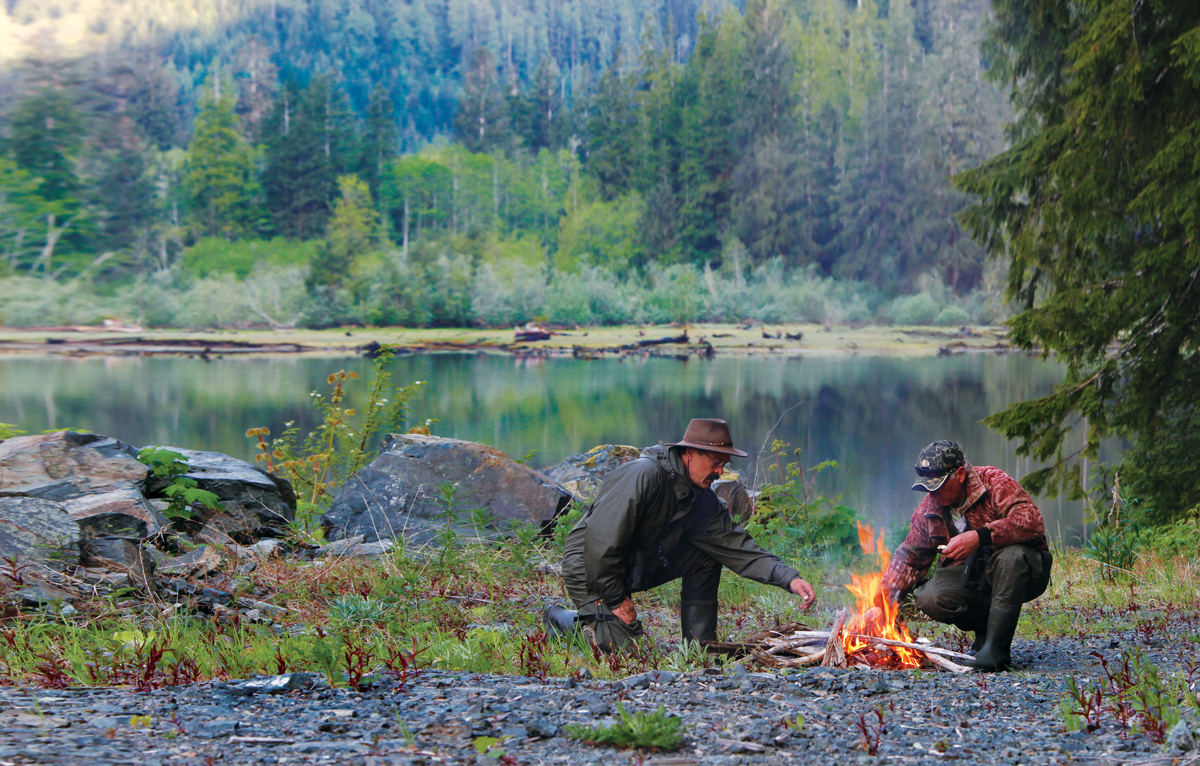
Cyr and the author prepare to steam a batch of freshly gathered oysters.
Vancouver Island bears haven’t had time to go to such extremes. Despite being smaller than their Ice Age progenitors, modern Vancouver black bears are hardly diminutive. Thanks to an abundance of vegetation, berries, salmon and seafood, most are larger than their mainland cousins. They still square 6 1/2 to 7 feet. They are blocky with broad skulls and black pelts, often with white chest stars.
More importantly to some hunters, Vancouver Island bears are beachcombers. They can be hunted from the water.
Fifty-eight-year-old Kim Cyr knows all about island bears, boats and beaches. He’s spent a lifetime prowling the rainforests, clear cuts, salmon streams and bays of Vancouver Island. He’s a prime example of the quintessential guide of yesteryear, the rugged, taciturn local thoroughly schooled in woodsmanship, do-it-yourself experience and years of trial and error. He doesn’t know his territory by topo lines and GPS maps, but by boot leather and boat rudder, by wind and currents. Bears, grouse, geese, salmon, halibut, trout, ducks, deer, clams, elk, seals, bass, oysters – he’s seen it all and eaten most of it.
When Kim suggested we abandon the Vancouver Island Guide and Outfitter’s five-star log lodge and its extravagant meals in favor of sleeping under a tarp and eating oysters on a beach, I signed up.
The western edge of Vancouver Island is the first stop for wind and waves that sail unimpeded down from Alaska, across from Japan or up from Hawaii. It’s no sea for open 14-foot boats, no matter how deeply hulled.

“We’ll sneak around it,” my confident guide assured me as I stepped into the small Lund. He threw me a float coat. “You can sit on your life jacket.” They were a perfect combination, the coat providing insulation and a welcomed windbreak, the lifejacket softening the hard bench seat.
The isolated bay where we launched was delightfully calm, protected from the open Pacific by a series of small islets. Boulders and eelgrass showed clearly at two fathoms. Waterfowl gabbled and pattered near the stony shore. A murder of fish crows, their calls sounding as if they had head colds, attacked a bald eagle that shrugged from atop its snag and flew stoically down the coast. Mergansers steamed out from a small river’s mouth while flocks of mallards and widgeon sprang from flooded sedge meadows. A small wedge of swans spooked behind the ducks and creaked by within shotgun range.
Kim cruised a few hundred yards offshore, weaving and weaseling through narrow channels, exposing secret bays and backwater flats where bears could forage unseen and undisturbed.
“Let’s wade around the corner,” he said after killing the engine and drifting quietly into a shallow nook where old bear tracks slowly disintegrated underwater. A grassy beach bent back around a point of forest to extend much deeper into the woods, creating a nearly cloistered corridor between bordering firs and cedars. It was empty of bears, but spattered with their droppings.

“Good place. We’ll check it again.”
In quieter waters Kim stood to glass, the motor idling. I mimicked him, panning with a new 8×42 Swarovski EL Range.
“Nothing here,” I said, proud that I hadn’t let a black stump excite me.
“Just that female with a cub,” Kim observed.
“What? Where?”
I looked more intently, finally spotting her tight against the Nootka rose and salmonberry brush edging the rainforest, half of her bulk concealed by the green sedges on which she fed. I couldn’t see the cub.
“It stands up now and then,” Kim said, and then he motored on. His ability to spot bears was uncanny, honed over decades. “The grass is deeper than you’d think and there are dips and holes. A lot of them will hang right against the forest edge where they blend with the shadows.”
The mysteries of the islands and back bays, river outlets and waterfalls were equaled only by my guide’s knowledge of them. He would steer past a shoal of harbor seals, aim for a wall of stone and emerge in a channel smooth as a mirror that led to a small beach rich with sedges and wildflowers.
“Let’s hike up this old logging road,” he’d say. “We took a seven-foot boar off it a few years ago. My nephew missed a big one down below that cut bank one time. They usually hit this spot at low tide. They like to eat clams.”
Black spots at great distance would slowly resolve into black bears, hump-backed and so busy feeding they wouldn’t notice the steady putting of the outboard as we motored past. Then we’d beach, one of us slipping over the gunnel to slow the aluminum hull before it could grate on the rocks. With the wind in our faces, stalking was easy. Just go slowly and stop if the bear looked up.
“Mature boar, but only a six-footer at best,” Kim said.
We found eight bears that first day, the last four coming practically within sight of one another in the last hour of daylight. We pulled ashore to eat eggs, sandwiches and raw oysters plucked from the shallows. The night was quiet save for the occasional slap of a fish and the hooting of a horned owl. Giant slugs, slimy and black, oozed across moss-covered logs, but we weren’t awake to see them.

The glassy bays at dawn would transform into dancing waters by mid-afternoon. White-capped rollers poured through open channels where no islands broke the back of the Pacific. Salt spray soaked us as the bow slapped into troughs as if falling off a trailer onto asphalt. But back in protected coves the water was calm and the bears fed undisturbed. The boar eating shooting stars was one of these. We’d glided past him on the first day, but his broad head looked bigger this time. When he heard the metallic click of my camera and looked up, we could see his scarred muzzle and a lump above his right eye.
“Another old one, but no more than six feet,” Kim barely whispered above the wind.
I don’t know if bears are as myopic as their behavior suggests, but this one stared at two full-grown men crouched in ankle-high sedges for a dozen more clicks of the shutter before loping away.
The next morning we steamed oysters over an open fire while glassing distant sedge flats, hoping a particularly large bear we’d glimpsed the previous evening would return for an early breakfast. By mid-morning it hadn’t appeared, so after sating ourselves from the oyster bar, we boated to another small cove where we’d spooked what appeared to be a stocky, broad-beamed, old boar at dawn. It was back.
Kim beached the boat well downwind and tied to an old stump while I peeled my 7mm Remington Magnum from its case and shoved three bullets into the magazine. Quickly we put a hump of ground between ourselves and the bear, tiptoed 200 yards, crawled around a big cedar log and sat, rifle in the sticks.
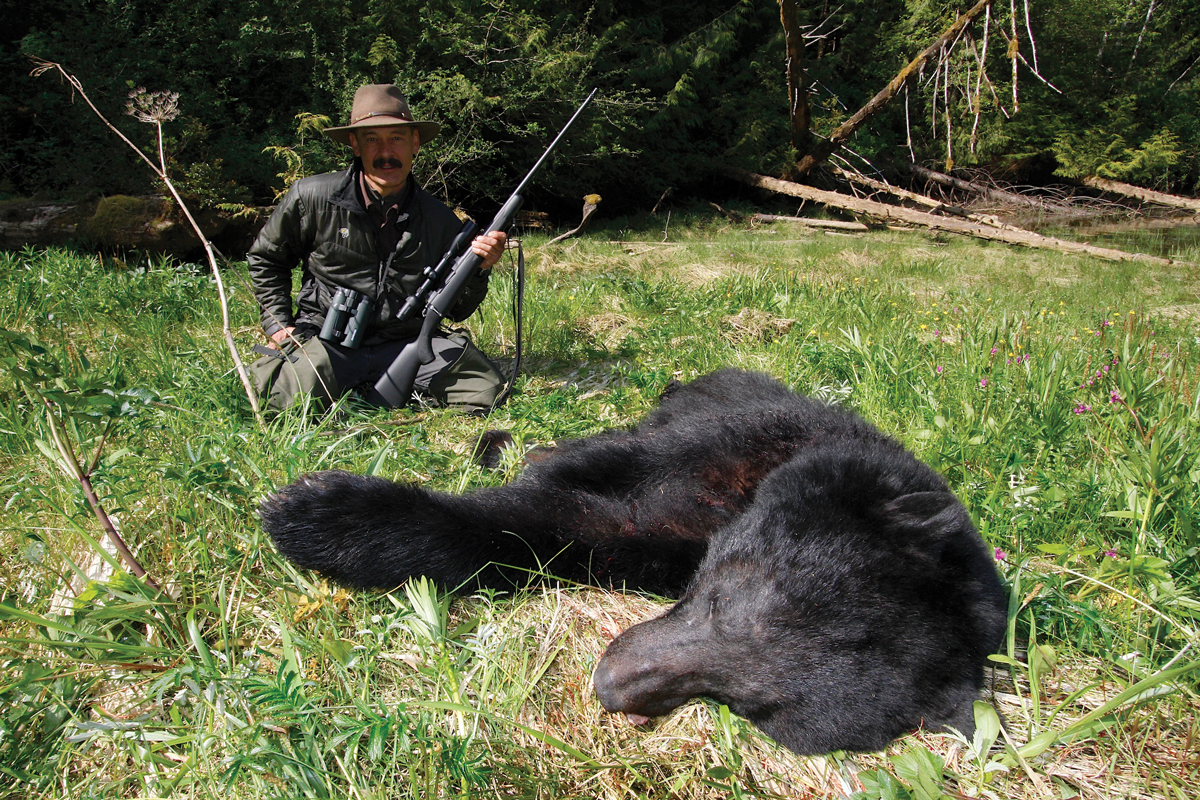
The bear was broadside, still foraging, but on the opposite side of the narrowing inlet, five leaps and a bound from deep forest. The sun was climbing, the temperature rising. This bear could go to bed at any instant. I hit it with the EL Range. Just 150 yards. We could get no closer without swimming.
Black bears are notorious for soaking up lead and leaving no blood trail. Tracks from soft pads would be nearly impossible to spot in forest duff. I aimed for the spine. The 7mm barked. The boar collapsed.
“I’ll stay on it while you get the boat,” I said. Spine-shot animals sometimes are only stunned. This one wasn’t. We puttered over in the Lund, sloshed through wet sedges on a rising tide and pulled the bear into the shade for skinning. Its upper incisors were worn to the gums and one canine was broken to a stump. Its coat, rich and dense, shone like sable. We packed the meat and hide in bags, laid them in the bow for ballast and started our long, scenic ride back along the coast.
GEAR TESTS
Jim Borden began building benchrest-accurate hunting rifles after his heavy benchrest rifles won more than 75 world titles and hundreds of state and regional titles. The custom Timberline bolt-action used on this hunt wears a 24-inch Hart #3 contour barrel fitted to Borden’s custom, stainless steel, two-lug action and slim, Borden custom-machined bolt handle. A Jewell HVRTS trigger is set to 2.25 pounds and breaks like a delightful surprise. The Borden Brake is so perfectly blended with the barrel that you cannot detect the joint. Talley Unitized rings are fitted to the sculpted action, and the works is pillar bedded, stress free, to a stiff, slim McMillan Rem. Sporter Pattern synthetic stock texture-finished by Jim Borden Jr. As a final weather-proof touch, all metal work is coated in black Xylon. While the finished rifle hasn’t the warm look or romance of a classic walnut-stocked rig, it feels sprightly and carries easily, comes to the shoulder naturally, hangs on target beautifully and prints three-shot groups of factory-loaded Vortex 150-grain Barnes TTSX bullets into 0.48-inch.
At Borden’s recommendation, I fitted the rifle with a Swarovski Z5 3.5-18x44mm scope with side parallax adjustments. The Z5 uses the same four-coil spring erector tube setup as the flagship Z6 scopes, but with a trimmer, lighter, 1-inch main tube. A rifle/scope/ammo combination like this is just about perfect for virtually any big game hunting in North America plus plains game in Africa.
Swarovski’s EL Range binocular is the perfect blend of optical resolution, brightness, flare control and contrast with laser range measuring precision in a format as slim and comfortable to carry as the standard EL 42mm binocular. There is an unusual “hump” under each barrel that looks weird, but provides a steadying platform that nicely fits the palms. Within these bumps are the rangefinder parts. This permits the barrels to remain slim and trim for that famous, one-hand EL grip. I found the rangefinder, as advertised, reliable to 1,500 yards. In fact, I got several readings from highly reflective subjects, well beyond that distance.
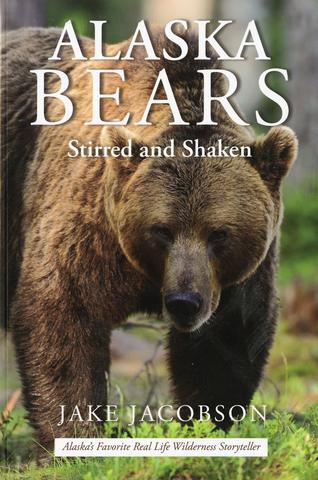 ALASKA BEARS: Stirred and Shaken is a collection of 24 stories describing Jake’s personal experience hunting and guiding for all the species of bears in Alaska. Bear biology, hunting techniques, cabin depredations and avoidance thereof, and other aspects of bear pursuits are detailed. These are true stories except for the names of some of the hunting guests from Jake’s fifty years of living and hunting in Alaska. Buy Now
ALASKA BEARS: Stirred and Shaken is a collection of 24 stories describing Jake’s personal experience hunting and guiding for all the species of bears in Alaska. Bear biology, hunting techniques, cabin depredations and avoidance thereof, and other aspects of bear pursuits are detailed. These are true stories except for the names of some of the hunting guests from Jake’s fifty years of living and hunting in Alaska. Buy Now
